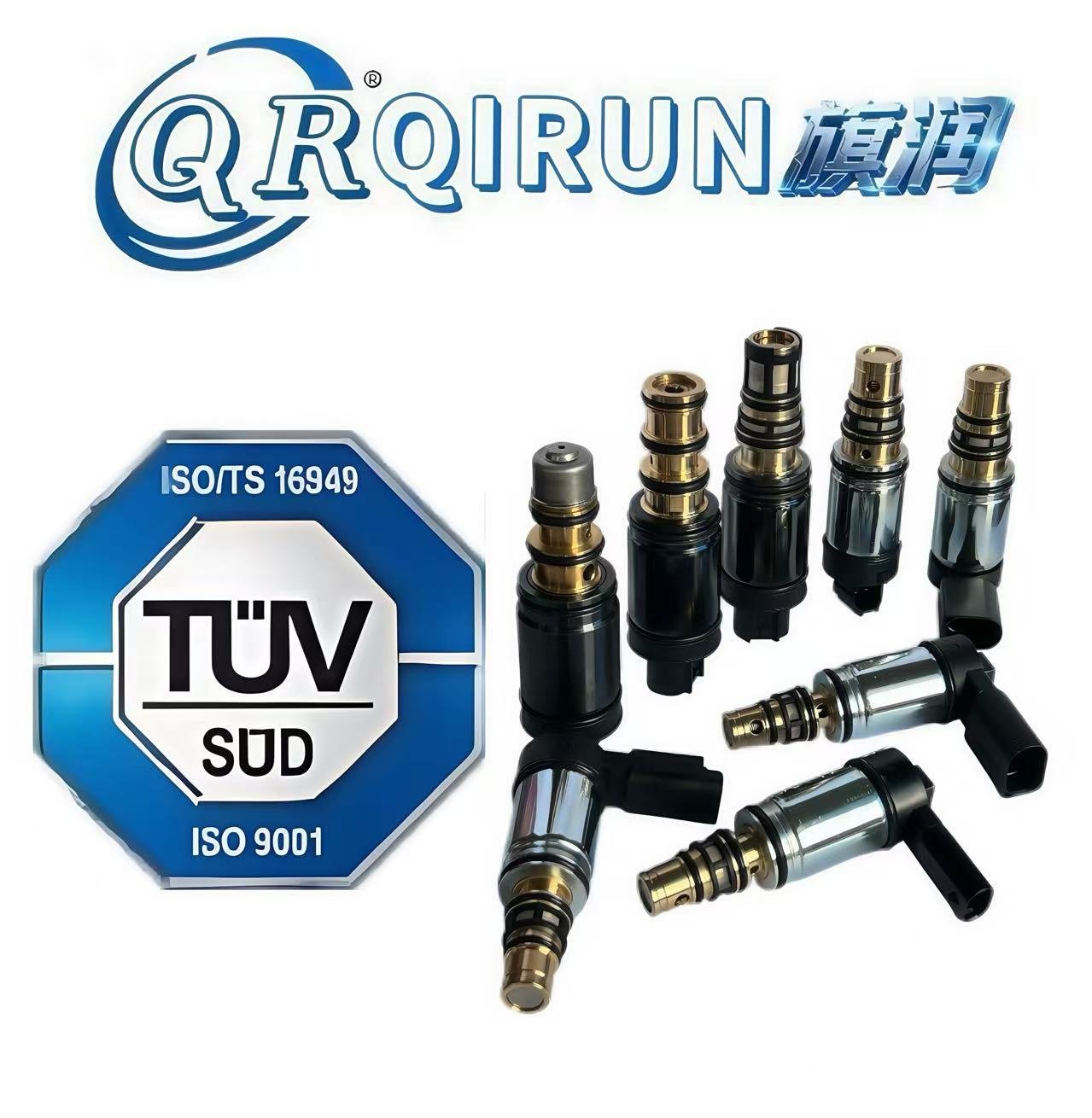Get Free Consultation!
We are ready to answer right now! Sign up for a free consultation.
I consent to the processing of personal data and agree with the user agreement and privacy policy

25+ Years Manufacturer Expertise in Compressor Control Valve Technology
As a professional manufacturer with over 25 years of experience in automotive AC components, Qirun Auto understands the critical role of AC compressor control valves in automotive air conditioning systems. The control valve is the core component of variable displacement AC compressors, precisely regulating refrigerant flow to ensure optimal cooling performance under various operating conditions.
“The AC compressor control valve plays a crucial role in the efficient operation of automotive air conditioning systems. It is the core component that regulates refrigerant flow in the AC compressor, ensuring optimal cooling performance under different conditions.”
The AC compressor control valve is a vital component in variable displacement AC compressors. Its primary function is to regulate refrigerant flow by controlling the internal pressure of the compressor, which directly affects the cooling capacity of the AC system. This control is essential for maintaining consistent cabin temperature while preventing compressor overload or increased energy consumption.
[Diagram showing control valve position and working principle in compressor]
Visual representation of how the control valve regulates refrigerant flow by adjusting swash plate angle
The AC system sensors detect cabin temperature and compare it with the driver’s set desired temperature. If the cabin temperature is higher than desired, the system signals the compressor to increase cooling capacity.
The AC compressor control valve receives the signal and adjusts the internal pressure of the compressor crankcase. By reducing pressure, the swash plate angle increases, allowing the compressor to discharge more refrigerant, thereby increasing cooling capacity.
When the cabin reaches the desired temperature, the control valve reduces the swash plate angle, decreasing refrigerant displacement, allowing the compressor to operate at lower capacity, thus reducing fuel consumption and compressor wear.
The control valve continuously adjusts refrigerant flow in real-time to meet cooling demands while minimizing engine load. This dynamic control optimizes AC efficiency, ensuring the vehicle maintains comfortable cabin temperature while consuming less energy.
AC systems using advanced control valve technology can improve energy efficiency by 30% compared to traditional systems, reduce compressor wear by 50%, and significantly extend system lifespan.
If the AC system intermittently blows warm air or takes longer to cool the cabin, the control valve may be failing. When the valve cannot regulate refrigerant flow properly, it results in uneven cooling.
A faulty control valve may cause the compressor to run at full capacity when unnecessary, leading to excessive engine load and increased fuel consumption. This is a clear sign the control valve is no longer effectively regulating refrigerant flow.
When the control valve fails, the compressor may continuously operate under high load, causing overheating. If not addressed promptly, this can damage the compressor and other AC components.
A faulty control valve may cause irregular movement of the internal swash plate, producing abnormal noises such as clicking or rattling sounds. If unusual sounds are noticed, it’s recommended to inspect the compressor and control valve.
Using contaminated or incorrect refrigerant can cause control valve clogging, leading to failure. Always ensure refrigerant is clean and compatible with the system.
The control valve relies on electrical signals to adjust the swash plate angle. Faulty wiring, loose connections, or damaged control modules can cause the valve to stop functioning properly.
Like other automotive components, AC compressor control valves wear out over time. Continuous use without regular maintenance can lead to valve failure.
If the compressor continuously operates under high pressure due to insufficient refrigerant or poor airflow, it may eventually damage the control valve.
Use AC system diagnostic tools to measure refrigerant pressure and observe compressor performance. If irregular refrigerant flow is detected, the control valve may be faulty.
In most cases, replacing the control valve is more cost-effective than replacing the entire compressor. Ensure you purchase a high-quality AC compressor control valve compatible with your vehicle model.
After replacing the control valve, recharge the AC system with appropriate refrigerant (R134a or R1234yf). This ensures the system operates at optimal efficiency.
Start the vehicle and monitor AC performance. Ensure the compressor engages properly and the cabin reaches the desired temperature without fluctuations.
We provide rigorously tested compressor control valves ensuring precise flow control and long service life.
Our engineering team offers professional technical consultation to help diagnose and resolve control valve related issues.
We provide control valves and related accessory kits ensuring easy installation and system compatibility.
For special vehicle models or application requirements, we offer customized control valve solutions.
Regularly check AC system pressure, pay attention to abnormal noises, observe cooling performance changes, replace related components according to manufacturer recommendations, use specified types of refrigerant and lubricating oil, and ensure professional installation and repair to significantly extend control valve and compressor service life.
Located in Foshan Industrial Center, Qirun Auto has over 25 years of industry experience, utilizing advanced manufacturing technology and strict quality control systems to provide global customers with high-quality automotive AC solutions.
Address: Xianan Er Shangyuan South Industrial Zone, Guicheng Street, Nanhai District, Foshan City, Guangdong Province
Phone: +86-13690143493
Email: a13690143493@gmail.com
Website: www.qirunauto.com | www.qrcontrolvalve.com
Get Professional ConsultationLearn more about our automotive AC solutions by visiting Qirun Auto and QR Control Valve. Let our 25 years of professional experience provide the best solutions for your automotive AC system!